#grays harbor historical seaport
Explore tagged Tumblr posts
Text
Lady Washington's restoration has begun! Grays Harbor Historical Seaport will be posting updates on their socials including their brand new YouTube channel!
55 notes
·
View notes
Text
Hey everyone! Our good friend Sully over at the The Daily World newspaper in Aberdeen (our homeport) wrote a couple articles about us! We've had a great season so far, with a wonderful rest of the season ahead of us!
#lady washington#tall ship lady washington#grays harbor historical seaport#the daily world#sailing#tallship sailing#tall ship sailing
30 notes
·
View notes
Text
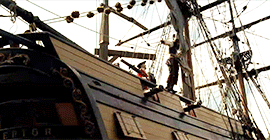
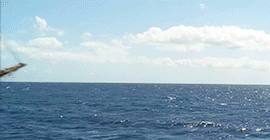
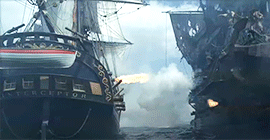

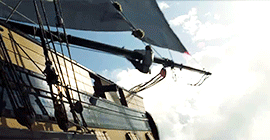
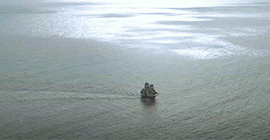
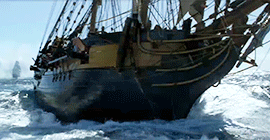
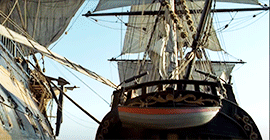
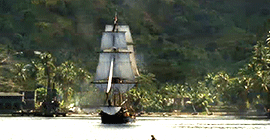
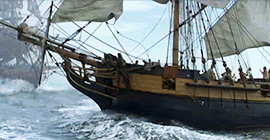
Oh, the Dauntless is the power in these waters, true enough -- but there's no ship that can match the Interceptor for speed.
happy launch anniversary (march 7, 1989) to the lady washington, also known as the hms interceptor!
she still sails to this day, based out of grays harbor historical seaport. if you want to help her stay out on the water for many more years, consider donating to them :D
#potc#pirates of the caribbean#potcedit#lady washington#hms interceptor#my gifs#*potc#lady washington my beloved#interceptor my beloved#no but really she's due for a refit this winter which. obviously is a big undertaking so i'm sure every donation would be very appreciated
147 notes
·
View notes
Text

It is the last day for pre-orders!
We've got two tiers: the digital zine is $5 and the physical zine is $15! Every physical zine will also come with the digital zine, and an amazing sticker sheet featuring many characters.


What's more, if we reach 25 orders, every physical order will come with a free 30mm button with a quote from the movie! Every button will be unique.
Any profits made will go towards the upkeep and continuation of The Lady Washington, the ship that was the HMS Interceptor in Curse of the Black Pearl. Gray's Harbor Historical Seaport, her home port, strives to preserve maritime history.
37 notes
·
View notes
Note
G'day! I'm about to embark on a 2 week sailing course on the USS Lady Washington ship from the Gray's Harbor Historical Seaport. You have any thoughts on this ship that was used for the Interceptor from Pirates of the Caribbean? Thanks!
Hi, i only know her from pictures, because i come from the other side of the big pond and had no chance to met her in person. But there are some good souls here who know her better and can certainly help you.
26 notes
·
View notes
Text
0 notes
Photo

Hey do you dream of running away to sea to become a sailor? BOY HOWDY DO I HAVE AN OPPORTUNITY FOR YOU:
Grays Harbor Historical Seaport has just launched their new training program, Sea School NW. Lemme tell you why this is a huge deal:
The professional maritime world is massively male-dominated, with only 2% of the global industry identifying as female. This program, run by some of the most inclusive, enthusiastic folks in the business, aims to change change that by providing subsidized professional training for underrepresented groups wanting to break into the field.
They’re only accepting scholarship folks right now, which means the only requirements are being age 18-35 and making less than double the federal poverty level for 2017 ($24,280 annually for a single person).
You’ll spend eight weeks sailing aboard the Hawaiian Chieftain, preparing to earn your USCG Ordinary Seaman Credential and advance your trade skills through hands-on-instruction, online coursework, marine system classes, industry mentorship and job skill development.
GET THE HECK IN THERE.
#sailing#tall ship sailor#life at sea#maritime#marine training#sail training#sea school nw#ghhsa#grays harbor historical seaport#hawaiian chieftain#tall ship#tall ship sailing
1K notes
·
View notes
Link
The Lady Washington is out of service until April, but there is still work to be done and monthly bills to pay. $78,000 is needed by the end of the year.
There’s no wiggle room. If you and I can’t raise this $78,000, deeper cuts will have to be made than have already been made.
Please send the most generous gift you can to erase the shortfall and get her out on the water in 20201. Your help will keep her sailing, save jobs, and preserve our shared maritime history.
57 notes
·
View notes
Text
Hey!!! I'm the artist behind this post and have been working with this lovely lady (as program coordinator, deckie, rigger, amateur carpenter, shore support, moral support, etc.) since 2021. She's owned by a nonprofit and is scheduled for restoration this coming October. I'm selling prints on my website with a quarter of the profits going back towards the refit. I love this boat and the folks aboard with all my heart, and it would mean a lot if you could support me, but more importantly, HER!! Keep Lady sailing, buy cool art 🥰 (more info about the org, boat, and restoration in the second link)


the brig Lady Washington - Washington state's tall ship (and also my friends' house)
all hand drawn by me on procreate
#self reblog#tall ship#sailor#historic sailing#boat building#boat#brig#lady washington#digital art#age of sail
522 notes
·
View notes
Text
Tonight I remembered that Grays Harbor Historical Seaport exists and spent a long time trying to figure out if the Lady Washington is going to come anywhere near me any time soon (…it looks like no, she’s staying in Washington for the foreseeable future), and I was also watching Once Upon a Time and it sure was a time to look up from my phone when the Jolly Roger came on and go “same ship!”
#i want to go on a tall ship#I miss the ocean#tho actually I just remembered I was last at the ocean in like. june#so it hasn’t even been that long 😂
1 note
·
View note
Text
Hawaiian Chieftain has been sold! (And not for scrap!)
Her new owners plan to repair her and sail her back to Hawai'i
#Hawaiian Chieftain#tall ship#age of sail#grays harbor historical seaport#it's bittersweet for me#I'm glad she'll have a better home#but I'm sad I'll probably never sail on her again
53 notes
·
View notes
Text
Hey all, as you may know, the Lady Washington is near and dear to my heart. She turns 35 this year, which is pretty old for a modern wooden brig like herself. She's sailed well every year, but before she can continue doing so, she needs some major work done.
There is a refit project that will begin this October and which will extend many years in multiple phases. Critical things like above the waterline hull planking, both masts, and a number of engineering/electrical systems need replacing before she can sail again in 2025, and it's not yet fully funded.
I know there's so, so much going on in the world right now, and many people that need money more than we do. But on the off chance you have a few extra dollars, we'd really appreciate the donation. This ship is my home, and there are many folks that feel the same; we'd hate to have to delay the 2025 sailing season more than it already would be, or even cancel it. Even if you don't have the money yourself, please share this around with anyone you know who might be interested!
Thank you so much! Fair winds and following seas, friends!
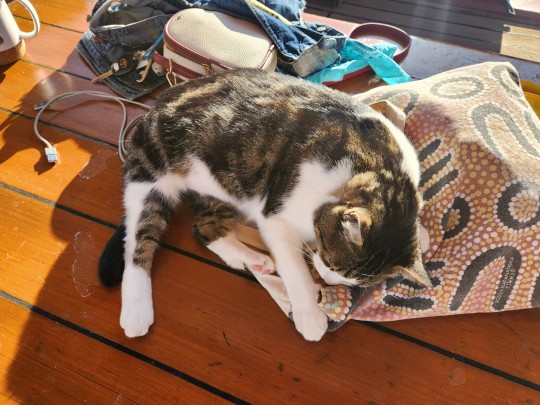
#lady washington#sailing#tall ship#mine#tall ship sailing#tall ship lady washington#marlin blogging#lady washington marlin#yes i am shamelessly using marlin for reach. reblog this cute kitty
195 notes
·
View notes
Text
Top 7 2019 lady washington sailing in the dalles in 2022
Top 7 2019 lady washington sailing in the dalles in 2022
Below are the best information and knowledge on the subject 2019 lady washington sailing in the dalles compiled and compiled by our own team invest-dallas: 1. Historical Sailing Ship Adventures on the Lady Washington | Grays Harbor Historical Seaport Author: historicalseaport.org Date Submitted: 12/29/2019 09:19 PM Average star voting: 5 ⭐ ( 44469 reviews) Summary: Set sail on the Lady…

View On WordPress
0 notes
Text
The Amazing Stories of Old Los Angeles

One of the most interesting thing that occurs when you're undertaking historic research are the side stories that seem to come out of nowhere. While researching one particular subject you often run across information that is as interesting or at times even more interesting than what you may have looked for to begin with. If you find yourself researching the history of Los Angeles California, chances are this may happen to you.
What's interesting is a comparison to it's in-state sister city, San Francisco. San Francisco developed for two basic reasons. It is one of the best natural seaports in all of America. Aside from the fact that it's also one of the most scenic areas of the U.S., San Francisco Bay seems made to be a seaport. Upon it's initial discovery by the Spanish explorers, San Francisco Bay was recognized as a strategic coastal port.
The other well known reason for it's rapid growth was the California Gold Rush starting in 1849. This monumental discovery came at a time when the Mexican-American War had ended and the United States was taking over what was then referred to as Alta California. The close proximity of San Francisco to the early gold mine fields just east of Sacramento meant that the city by the bay would become a focal point of growth. Money from the gold mine areas found it's way to the much larger and cultured San Francisco area of the 1850's.
The case with the development of Los Angeles is a different story. For one thing, Los Angeles did not have a natural seaport. The seaport at San Pedro Harbor was a man made creation. Water resources were another big issue and would end up in a series of scandals later on. Available water is necessary for any city to survive and grow. San Francisco is fortunate to have a nearby water source from the American and Sacramento Rivers to the east. Los Angeles on the other hand was in essentially a desert environment. The enjoyable southern California climate was mild and dry but the water issue would always be a concern.
The Early Los Angeles Pueblo
Los Angeles was originally established by the Spaniards in 1781. They thought the area a good place to build a pueblo and establish their presence. The Spanish founding of Los Angeles would also serve as another reminder of their claim to this coastal territory, especially in regards to the British and the Russians who both were active in what is now the northwest United States. Part of the task for the Spaniards was to find settlers. This proved not easy. What all of us know today as the mild, scenic and beautiful beach locale of southern California was not that way in the sixteen and seventeen hundreds. The area was desolate, remote and to most people unattractive. Just traveling to get there wasn't easy either.The Spanish of course offered incentives to settlers such as land grants and livestock. It wasn't easy but eventually they found twelve families to settle in the pueblo. As many people know, one of the major undertakings of the Spanish in colonial Alta California as well as in what is now the states of New Mexico and Arizona was the establishment of missions. The first one was built in San Diego by Fray Junipero Serra in 1629 and eventually reached a total of twenty-one stretching north to Sonoma California just a short distance north of San Francisco Bay. The missions were established to Christianize the native population and to convert them into subjects of the King of Spain.
The history of California and the American southwest included the Spanish being eventually driven out by the Mexican Revolution during the early 1820's and then the Mexican's driven out at the conclusion of the Mexican-American War in 1848. After that the United States took control of the southwest and California with statehood of California enacted in 1850.
The Area Grows Rapidly
Probably the most significant engine of growth for the Los Angeles area came with the arrival of the Southern Pacific Railroad in 1876. Prior to that the largest transportation line serving the area was the old Butterfield Stage Line. To give you an idea of population trends in the early days, the Los Angeles area had about 1,600 people in 1850 at the time of statehood. About 4,400 in 1860, 5,700 in 1870 and close to 12,000 in 1880. After that period, growth rose very rapidly. In 1890 the population in the entire Los Angeles metropolitan area was something like 70,000. Certainly the railroad's arrival in 1876 influenced much of the growth. There is a lot of interesting history about how the area was advertised in conjunction with the Southern Pacific to lure settlers to Los Angeles. There is history written that states that the rapid growth of Los Angeles was nothing short of a land speculation campaign promoted by the city fathers. Promoted was the sunshine, mild climate and available land for agriculture. For people back in the midwest tired of brutal winters and looking for a fresh start, Los Angeles most likely sounded pretty good. On top of that you could travel there on the relatively comfortable and fast Southern Pacific Railroad. What most likely wasn't promoted was the scarcity of water. Regardless, as the population statistics show, the area grew by leaps and bounds. By the year 1900 there were about 130,000 people residing in the region. Los Angeles saw a doubling of it's population in about ten short years.
Struggles and Scandals in the Growing City
I found two stories of early 20th century Los Angeles particularly interesting. The first had to do with the bombing of the old Los Angeles Times building in 1910. I first came across this incident ew years ago when reading the book "American Lightning" by author Howard Blum. The book is a great read and I highly recommend it. It offers an excellent perspective of what was important in early 1900's L.A. The bombing of the L.A. Times was the result of labor strife. From about the 1870's onward, labor strikes and the resulting violence sprang up over much of America. In some of these cases federal troops were ordered in to try and restore peace. Some would go on to accuse the military of acting as strikebreakers. The Pullman rail car company strike in 1890's Chicago is a good example. Mine workers strikes also occurred in several places at the turn of the century and beyond such as the bloody between strikers and the Colorado militia. Although far removed from the midwest, Los Angeles was not immune to the labor unrest.
The Los Angeles Times bombing and resultant fire caused the deaths of twenty-one newspaper workers and injured about one-hundred others. Several colorful characters of the time became involved with the subsequent investigation and criminal trial. One in particular was William J. Burns who was hired by the city to find the guilty party or parties. Burns was the founder of the famous William J. Burns International Detective Agency. Burns and his people worked the case relentlessly. Eventually they traced the bombing to the work of two men associated with the International Association of Bridge and Structural Ironworkers headquartered in Indianapolis. Indicted and returned to Los Angeles were the brothers John and James McNamara. The case eventually became a symbol for the union versus industry struggle of the times. None other than Clarence Darrow from Chicago headed the defense team. The socialist Eugene Debs weighed in on the case and at one time even suggested that publisher Harrison Gray Otis may have planted the bomb. Otis was very anti-union and vehemently resisted unionization of the paper for years. You could say that Otis was perhaps one of the biggest anti-union forces of the era. He was quick to react when any union tried to organize in the Los Angeles area. During this time of intense labor unrest and union organizing it was not uncommon for the business industry to hire private detectives to try to infiltrate unions. There was a lot of bad blood on both sides of the labor issue.
Quite interesting about the highly publicized trial was what happened to Clarence Darrow. Hired by the American Federation of Labor to defend the MacNamara Brothers, the AF of L and Darrow tried to make heroes of the MacNamaras. During the trial there was even an attempt by the defense to bribe jurors. In fact, Darrow was placed at the scene of one of the bribe attempts where his investigator actually turned over money to a juror. After the trial was over in which Darrow convinced the MacNamara brothers to change their plea to guilty to avoid the death sentence, Darrow himself was charged with bribery. His two trials ended with hung juries but he was allowed to go home only if he agreed not to practice law again in California. After this case, because of the bribery charges, Darrow's popularity as a labor attorney ended.
The second interesting story has to do with Los Angeles' need for water. Some refer to this episode as the Los Angeles Water Wars or California Water Wars. For Los Angeles to build a suitable aqueduct system to bring water down to the city it had to acquire land in the Owens Valley. By the year 1905, through aggressive accumulation, the Los Angeles City Water Company had purchased enough land to begin building the city's aqueduct system. In fact, it was thought that by the year 1890, because of rapid population growth, Los Angeles effectively had tapped most of it's local sources of water and had even then started to acquire land for an aqueduct system. The head of the Los Angeles' Department of Water and Power was an engineer named William Mulholland. Mulholland was appointed to the position by L.A. Mayor Frederick Eaton who served from 1898-1900. He and Mulholland were credited with developing the aqueduct system. Some farmers in the Owens Valley sold out quickly because of the economy. They needed the money. Others who resisted selling held out. In fact and by 1930 those that did decide to sell received the highest prices for their land. As it turned out, the majority of farmers who did sell sold their property between the years 1905 to 1925 and they accepted much less money for their land than Los Angeles was secretly willing to pay. By the year 1928, the water diversion for the aqueduct completely drained Owens Lake. The farmers became incensed and their reaction didn't take long to turn violent. The farmers made attempts to dynamite the aqueduct, opened diversion gates and above all kept raising their prices for their land. Armed guards were assigned by the city to patrol the aqueduct. Regardless of the farmers resistance, the Owens Valley was eventually drained dry and agriculture suffered.
The St. Francis Dam was built over the years of 1924-1926 to provide a reservoir. Disaster then struck and everything pretty much ended for William Mulholland when on March 12, 1928, just two years after it's completion, the St. Francis Dam which he had both designed and supervised the construction of, failed just a few hours after he personally drove out and gave it an inspection. After accepting responsibility for what was the worst civil engineering disaster in the U.S., he resigned his position in March of 1929. It's thought that William Mulholland carried the burden of the St. Francis Dam disaster with him for the remainder of his life.
The water from the dam failure sent a wall of water some estimated as 100 feet high down the Santa Clara Valley toward the Pacific Ocean. The St. Francis Dam disaster was responsible for the deaths of an estimated 450 people including schoolchildren.. An important side note is that Frederick Eaton (the former mayor) acquired land in the mountains on the Owens River which later, prior to the building of the St. Francis Dam, was determined to be an excellent site for a needed reservoir. Eaton held out for an enormous sum of one million dollars and his land was not purchased by the city. This led to the selection of the site where Mulholland eventually built the St. Francis Dam. Later investigation determined that the St. Francis Dam failure was the result of unknown weak bedrock formations Los Angeles Acting School at the site. It's interesting to note that the weak bedrock at the St. Francis site was not noticed by the geologic experts of the era but today is easily ascertained. This is a good example of how geology and engineering has progressed over the past 100 years.
1 note
·
View note
Photo

The Lady Washington at anchor in fog in the San Juan Islands of Washington State. © Grays Harbor Historical Seaport
333 notes
·
View notes
Photo

Grays Harbor Historical Seaport’s Lady Washington
#lady washington#historical tall ship#grays harbor#replica ship#brig#tall ship#nautical#washington#pirates of the caribbean#star trek
11 notes
·
View notes